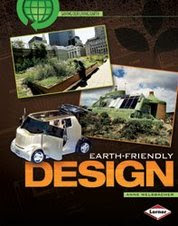(Our UU church is currently lay led, and Sunday was my turn to present a sermon. What follows is the first part of my presentation. If you'd like to read the full piece, let me know and I'll email you a copy. Or we'll see... maybe I'll add the rest of it here, later.)
The Tao of iPod
Annie Welsbacher, First Unitarian Universalist Church, Wichita, January 25, 2009
Gadgets: The downfall of a free society, electric litter paving an inexorable path to our culture’s moral, intellectual, spiritual, and inevitable destruction.
If you are an American living in the 21st century, you likely have fretted over this topic, or some variation on it. You might even have done more than just fret: read stories online, e-mailed, pod-casted, text messaged, twittered, Googled, or pontificated on your cell phone about it—possibly while driving somewhere that you found with the help of Mapquest.
Oh, you worry: Your kids can’t do their homework without at least two electronic doodads playing simultaneously, friends who used to talk to you in person now mass-e-mail you slightly off-color jokes, God knows what sorts of cancerous rays are toasting your brain cells every day.
This isn’t at the top of the list of any sensibly paranoid 21st-century American—far too many other horrific dangers beckon to us daily, from human warfare to the poisonings of our planet’s great life-giving gifts, to the snuffing out of our collective thinking skills that the modern cults passing themselves off as “media” inflict upon us.
But it’s there, lurking below the surface, this vague worry that all these toys can’t possibly be good for us. They’re diluting Art, reducing it to snappy tunes and pyrotechnic tricks; they’re stealing away our reading time, replacing it with the popcorn of TV commercials; they’re sucking us into the capitalist evils of American excess and damning us to live out golden days that will be consumed with the work of disposing of all the junk we accumulated, and that now corrodes in our basements.
But wait. It occurred to me—while jogging along the wildflower-strewn bed of what once supported railroad tracks laid down for a form of transport nobody uses anymore—that I have heard all this before.
I grew up in an academic 1970s household, and remember parties at which people stood around imbibing white wine and martinis, rueing the ruination of our society’s culture. A popular refrain of the day was: “Theatre is Life; Film is Art; Television is Furniture.”
I distinctly remember my father—who, if you press him on it, will acknowledge that he has a PhD, but who in general has little tolerance for anything even mildly effluent of pretention—saying to me that when somebody furrowed an eyebrow at him and uttered that “television is furniture” bit, he liked to smile sweetly and reply, “oh, I’ll watch any old crap”—except he didn’t use the word “crap.” He said this usually shut them up so he could go back to watching Bullwinkle or Hee Haw or the WSU football game with a clear head.
(end part one)
Post No. 213: There's Malice in the Palace
3 weeks ago





